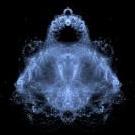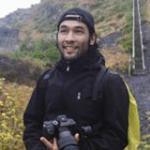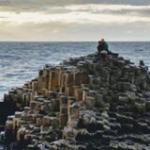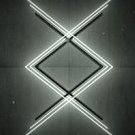Search the Community
Showing results for tags 'rx100'.
-
I just bought a Sony DSC-RX100. After a couple years shooting my personal projects on a Canon 7D, I needed something more compact that I could carry with me at all times, and the Sony DSC-RX100 looked like it could be the one. The great reviews, the ability to shoot 1080p at 50fps with a fast Zeiss IS lens, full manual control in video mode, focus peaking and a 16mm sized sensor convinced me to go for it! My footage shot on the 7D improved quite a lot during the time I've been using it, knowing a camera's strong points and especially its limitations is very important to getting good images out of it, so the first thing I did with the Sony DSC-RX100 was to shoot some tests to help me decide which settings I'll be using when shooting video with it. Like most people around here I learn so much from online reviews and discussion forums, and those have been a great help deciding my gear purchases, so I'm sharing what I learned from my tests as a way to return the favor and give something back to the community. There's been some good reviews of the Sony DSC-RX100 online, and some useful info spread around the internet, but I think this post will cover a lot of useful information for whoever's interested in this camera for video, and much of this info will also apply for any other similar camera. I started by turning off all the automatic picture improvement options, as they usually degrade the quality of the image and make it less gradable, then I set the codec to AVCHD at 28mbits and 50p (PS). SHOOTING MODE For video shooting I'd recommend setting the top wheel to video mode and then selecting video-M for manual video shooting The RX100 does have a dedicated Movie Recording button, and can shoot video on any Stills mode, but you might get aspect ratio and exposure changes once you hit the Record button in these modes. In video-M mode you'll get what you see on screen. RECORD SETTINGS The Sony RX100 can shoot movies in two different formats, MP4 and AVCHD. All MP4 options are below 1080p resolution though, so I won't get into those. In AVCHD mode however, we get 3 different 1080 options: 50i 24M (FX) (50i @ 24Mbps, Blu-Ray AVCHD disc compliant) 50i 17M (FH) (50i @ 17Mbps, DVD AVCHD disc compliant) 50p 28M (PS) (50p @ 28Mbps, Progressive Scan) So it seems like we get 50i at 17Mbps and 24Mbps, and we get 50p at 28Mbps, but not really… The 50i mode is actually capturing 25p images out of the sensor and encoding them as 50i footage, this means that we do end up with interlaced footage, but since it was captured progressively, de-interlacing it will produce a clean 25p image! So if we're looking for the best possible video out of the RX100, we should use 50i 24M for 25fps video and 50p 28M for 50fps video. In theory, shooting 50i 24M gives us the best bitrate per frame in this camera, almost twice as much as shooting 50p 28M. Shooting 50fps however would have neighboring frames changing less than when shooting 25fps, helping the encoder do a better job, but still the per frame bitrate is lower, and here's a comparison that shows is. If you look at the darker areas in the back where the window is, you'll see that the 50i version is slightly cleaner. Here's an example of something in motion shot at 50i and 50p, the 50i frame was de-interlaced and as you can see there's no interlacing artifacts at all. Considering all of the above, I think it's safe to say that the 50i 24M mode, which is in fact 25p @ 24Mbps, will give you best video quality out of this camera. CREATIVE STYLES Creative Styles is the RX100's designation for Color Profiles. My first test was to choose the flattest Creative Style the camera had to offer, so I shot some footage of all the different styles. After looking at all these different images, I decided to go with the Portrait Creative Style, as it seems to be the flattest of them all. EXPLORING THE PORTRAIT CREATIVE STYLE Each Creative Style has settings for Contrast, Saturation and Sharpness that can be set from -3 to 3, so I shot some more footage using the Portrait Creative Style in a number of different settings. Using the Portrait Creative Style at the minimum settings (Contrast: -3, Saturation: -3, Sharpness: -3) definitely (and obviously) seems to be the flattest style in this camera, but I had to check how well it graded and how it compares to using the default values (Contrast: 0, Saturation: 0, Sharpness: 0). On the top left you have a frame shot using the Portrait Creative Style, with all the settings set to 0, on top right you have a frame shot using the Portrait Creative Style in its flattest settings (Contrast: -3, Saturation: -3, Sharpness: -3). On the bottom right frame I added some sharpness to the flat image, which responded quite well, and on the bottom left frame I added not only sharpness but also increased the Saturation and Contrast in order to match the top left frame (Contrast: 0, Saturation: 0, Sharpness: 0). The result is an image that matches in color saturation and contrast, but with a much nicer detail and less compression artifacts. It looks sharper and cleaner overall, which made me decide to use this Creative Style and these settings from now on. SHOOTING BLACK & WHITE The following test is something I've been wanting to do for a while, regardless of the camera. The thinking behind this test was: "If the camera is compressing B&W footage instead of color footage, maybe it can do a much better job at it since it doesn't have all the color information to process, so even using the same bit rate could give us better results." Of course I don't know the details on the cameras' inner workings, but assuming the B&W Creative Style is applied BEFORE the footage is compressed to AVCHD, then this should work. Maybe. So I shot some footage using the B&W Creative Style in its flattest settings (Contrast: -3, Saturation: -3, Sharpness: -3), which you can see on top left, and then some more footage using my new favorite Portrait Creative Style, also in its flattest settings (Contrast: -3, Saturation: -3, Sharpness: -3). On the middle left frame, I increased the sharpness and the contrast on the image to make it less flat, and on the middle right frame I did the same, and also desaturated it. As you can see both images are different, since the B&W Creative Style's color conversion is not merely desaturating the image to create a B&W version, it's using a more clever process that also looks better, but anyway, the point here is to test the image compression and figure out which one gives cleaner results, so on the last test frames I increased the exposure by 2 stops to find out how well the images handled it. On the bottom left frame you can see how much cleaner the image shot with the B&W Creative Style is, compared with the one shot using the Portrait Creative Style, it's actually beautifully clean and overexposing it by 2 stops didn't show any ugly artifacts at all. So my conclusion on this one is, if you're shooting for black and white, and you're sure that's the look you'll want (since it's kind of hard to color B&W footage if you change your mind afterwards), then using the B&W Creative Style will give you far superior results! DYNAMIC RANGE OPTIMIZER The Dynamic Range Optimizer works when writing to compressed formats, such as JPG, MP4 or AVCHD. It has no effect when shooting RAW. Its purpose is to capture more detail in the areas that are more prone to get lost when using compressed formats, such as dark shadows. It works in the darker areas of the image, making them brighter and producing a flatter image, which makes it easier on the image compression to achieve better results. Here's a test scene shot using all the DRO levels available. There's also an Auto Mode, but I suspect it wouldn't give predictable results when shooting manual video. The result is quite clear on every mode. Personally I think 5 is too much and might be actually degrading the image more than it helps, but lower settings definitely look not just useable but very useful in achieving a flat and clean image. I'd say using the DRO in its modes 2 and 3 would definitely help achieving a better flat image. I'll probably leave it at 2 all the time and increase it to 3 in situations with more contrast. 5DtoRGB I've used 5DtoRGB on Canon footage since the early beta versions, and I honestly don't understand how come it's not used by everyone. 5DtoRGB features one of the best YCbCr to RGB compression out there, and it's free!!! (the Pro version with batch capabilities costs $50 though) 5DtoRGB does a great job improving aliasing and compression artifacts and transcoding to 10-bit Prores (can also transcode do DPX image sequences and DNxHD files), or at least it did with Canon DSLR footage, so I thought I'd try it with the RX100. The top frame is from the original AVCHD file and the bottom frame is from the Prores transcoded file out of 5DtoRGB. 5DtoRGB automatically changed the Decoding Matrix setting to ITU-R BT.709, so I assume that's the one to use with the RX100 (Canon DSLRs like the 550D, 60D or 7D used the ITU-R BT.601 Decoding Matrix, the 5Dmk3 however used the ITU-R BT.709). Looking at it like this there's not much of a difference, so I went looking in the channels. The Red and Green channels looked quite clean in both versions, but looking closely at the Blue channel you can see how 5DtoRGB makes a pretty good job at smoothing out some of the compression blockiness, but mainly smoothing out the aliased lines you get on sharper edges. Using 5DtoRGB won't do any miracles, but when shooting to 8 bit compressed codecs, every little bit helps, and using it along with a flat Creative Style will definitely help you getting cleaner and better images. SHUTTER ANGLE / SHUTTER SPEED The Sony DSC-RX100 has the annoying feature of only shooting 50fps (or 60fps on NTSC markets). On one hand it's great to be able to shoot 50fps at 1080p, but on the other hand, shooting 25fps at the same bit rate would probably produce better results with less compression. One of the advantages of this could be that you'd always have the extra frames in case you needed the slow motion effect, but unfortunately that's not quite the case, since the ideal shutter speed for 25fps real time playback is different than the ideal shutter speed for 25fps slow motion playback. If you're planning on shooting for 25fps real time playback, then you should set your shutter to 1/50, but if you intend to shoot for slow motion playback at 25fps, then you should set your shutter speed to 1/100. Using a shutter speed of 1/100 for real time 25fps playback will not give you enough motion blur, and the motion playback will not be as smooth as it should. Also, playing back footage shot at 1/50 shutter speed at 25fps slow motion will have too much motion blur, making its motion look rather fuzzy. Here's a sample file you can download yourself. This was shot at AVCHD, 1080 50fps with a shutter speed of 1/50, meant to be used on a 25fps timeline, playing at real time: https://dl.dropbox.com/u/8569573/rx100review/RX100videoSample1.mov That's it for now, I really hope it helps some people out. I have some videos I can share later on if you're interested, and I also might update this review with tests of the different Steady Shot modes once I get to them. Keep in kind that these are only my findings and personal opinions, it would be great to hear from people with different opinions, or about settings you think would give better results. Enjoy!
- 153 replies
-
- rx100
- creative style
- (and 6 more)
-
http://vimeo.com/152159680 For all the slow motion parts I used the RX100 mk4. For the 25fps parts I used a Canon 5D mk2 with prime lenses.
- 16 replies
-
- journalism
- short
-
(and 1 more)
Tagged with:
-
I'm looking at making the switch back to using a compact camera for video. I had an S95 a while back that I shot over 20 music videos with, and got some great results from it. Then I picked up an NEX5N and have already shot over 20 videos with that too, about half of which are still yet to be edited. It's got a great look, and I've been using some nice lenses with it including a few old Nikons, but I'm missing the freedom I had shooting with te S95. The overheating slows me down, I've had dust on the sensor that I couldn't see on the LCD, there's more to carry, I miss having decent macro capabilities, and changing lenses all the time is a pain too. So I've been checking the RX100 and LX7. Comparing the two, the LX7 has caught my attention the most. I've looked at a lot of RX100 footage, but when it comes to shallow dof, I'm yet to see any clips that offer much more than what the LX7 appears to offer, judging by clips I've seen from that. But not a big deal anyway. I was happy with the look I got from the S95 with an ND filter attached. Here's a comparative list I've compiled so far. Panasonic LX7 advantages: 120fps at 720p. There's a waterfall clip on Youtube which is a good example. 3 step ND filter. Cheaper by at least $200 here in Australia 24mm wide Timelapse function 1cm macro Hot shoe Sony RX100 advantages Better photo quality due to larger sensor Camera is smaller Better in low light? Opinions anyone?
-
Hi - I am v. basic photographer but want to learn...mostly travel/family etc...Would love to get a bit more serious and learn about video etc. So...I currently have a Pana LX5 which I find generally nice. I was going to upgrade to the RX100 II to get really great shots in a compact form for again, travel/family etc. My first question is on a slightly different tangent...I am looking at non fixed lens cameras..And came down to NEX 6 vs Pana G6. Both seem to get pretty good universal reviews. I guess on this forum most people would recommend the G6 for better video? If am pretty keen on small form..Would the NEx6 be OK/nearly as good but with the better/smaller form? And if the answer is the NEX6 would likely be pretty good for me. I wonder if I shouldn't get the RX100 II and just step straight to the NEX6. NEX 6 with a lens vs RX100 II is almost the same price on Amazon in the US. Any advice/thoughts appreciated. thanks, Brett
-
New versions of these cameras are expected to be announced tomorrow (27june). http://www.sonyalpharumors.com/sr5-first-images-of-the-rx1r-and-rx100mii-leaked/ I'm for one is really exited to see what innovation Sony have managed to cram into the new RX100 - I dream of no moire, 1,8 constant aperture and a better codec. Hopefully Sony have decided to rise to the challenge of the BMPCC.
-
I know everyone's flipping out about RAW right now, but I thought I would submit my latest real-world work: MTV True Life, I'm Starting a Business with Friends. I shot this whole episode on Sony Rx100's. I wrote a detailed blog post about my shooting and editing techniques. Will post a link to video as soon as MTV releases it. Until then, enjoy the blog! http://rungunshoot.com/how-i-made-an-mtv-reality-show-with-two-pocket-cameras-and-a-macbook/
-
Hello. Thanks to Andrew...his review made me buy the RX100...i am very happy with it! So now i would like the settings to match the GH3 with moderate flat settings for filming. Has anybody tried this out? What are your settings so that in post it is not too hard to match them? I am talking of film settings here...contrast, sharpness, filmtype etc. Regards Michael
-
A simple idea: dance a Mazurca in some places of our trip to Morocco. Recorded with a Sony RX100 Music by AmoRRomA http://vimeo.com/63613255
-
Hi i am wondering about buying a GH3 it will be used for landscape/nature footage but i am uncertain about how much better the GH3 dynamic range in video mode is? I know that the GH3 is superior in photo mode but how much better is it's dynamic range in video? The GH3 and a decent lens is a large investment and i want to know that there will be a big different. I want a smooth organic image quality. I have seen alot of sample footage and yes the GH3 is much sharper and certainly superior bitrate compared to the RX100. But i am more uncertain about the dynamic range. Would be nice if maybe someone can make a dynamic range comparison between the RX100 and the GH3. With the best possible settings on both cameras. I own a RX100 which is certainly a great camera. The GH3 is interesting but i have not been convinced yet that it will be worth the cost. Dynamic range is very important but i can't afford the cost of the BMC with lenses and accesories. I would really wish for a camera of the size of the RX100 which would have the dynamic range of the BMC in it's video mode. I hope it will happen some day. I have also been looking at the canon HF G20 and G25 cameras but am disappointed that they still are 1080i based cameras. The panasonic SD900/X900/X920 have even smaller active sensor size then the G20/G25 so they are out of the question. I have the SD600 (which is 3xcmos and 1080p 50fps) and the dynamic range certainly is limited and kills all chances of the organic quality i want to see.
- 27 replies
-
The goal here was to use the Sony RX100's Active Image Stabilization + the plugin Lock & Load to get steadicam-like fluid walking shots without too much CMOS jello wobble or digital zooming on the image. You be the judge... http://vimeo.com/57910477
- 7 replies
-
- camera test
- rx100
-
(and 5 more)
Tagged with:
-
https://vimeo.com/56781551 This nightlife events company flew me to Vegas and let me shoot whatever I wanted for a promotional video for them. Had a pretty awesome weekend and just filmed everything as it developed.
-
Here's part one of a new music promo film I shot in Snowdonia using the FS700. I think there's one shot in there from RX100.Some nice CG in there too! Enjoy! [media]http://www.youtube.com/watch?v=PNGquFXmLOU[/media]
-
[color=#000000][font=Tahoma, Helvetica, sans-serif][size=3][background=rgb(238, 238, 238)] I have succumbed and have an RX100 coming this week to be my B camera to my Sony Nex 5N![/background][/size][/font][/color][color=#000000][font=Tahoma, Helvetica, sans-serif][size=3][background=rgb(238, 238, 238)] I ideally want to shoot footage on the RX100 to look identical to that of the 5N so if I was to use both at a function I could easily mix in footage from both cameras to create a final piece.[/background][/size][/font][/color][color=#000000][font=Tahoma, Helvetica, sans-serif][size=3][background=rgb(238, 238, 238)] The constant question marks over shutter speeds at 50p on both cameras is also bothering me. I shot some footage at 50p 1/50 to see if the footage would be useable both in slow motion in a 25p timeline and also at normal speed in a 25p timeline. In both cases I was not too happy with the motion blur, It just does not look as good as shooting either natively at 25p at 1/50 or 50p 1/100 for slow mo in a 25p timeline.[/background][/size][/font][/color][color=#000000][font=Tahoma, Helvetica, sans-serif][size=3][background=rgb(238, 238, 238)] Based on the above I think you have to make a decision before you shoot any footage at 50p that is to be used in a 25p timeline. That decision is to whether your footage is going to be slowed down in post or not. Based on this answer you can then decide to shoot 50p at 1/100 for slow mo or 1/50 for nornal speed..although like I said I still think 1/50 shutter at 50p at normal speed in a 25p timeline still does not like as good as shooting natively at 25p on the camera (which you cannot obviously do on the RX100, but you can on the 5N)[/background][/size][/font][/color][color=#000000][font=Tahoma, Helvetica, sans-serif][size=3][background=rgb(238, 238, 238)] I will always be putting any footage I shoot in a 25p line so that is the only constant I am sticking with…its how I merge the footage from both cameras and get the best settings on both to deliver the best output….that is my main concern and caveat at this stage.[/background][/size][/font][/color][color=#000000][font=Tahoma, Helvetica, sans-serif][size=3][background=rgb(238, 238, 238)] With all this in mind I think I might choose to use my NEX 5N for 25p 1/50 footage and my RX100 for 50p 1/100 slow mo footage exclusively.[/background][/size][/font][/color][color=#000000][font=Tahoma, Helvetica, sans-serif][size=3][background=rgb(238, 238, 238)] If anyone can give any sage help and advice on this I would greatly appreciate it.[/background][/size][/font][/color]
-
Just bought a Sony RX100 (two, actually) and have been trying them out in challenging environments. Here's a quick vid that takes a poetic look at the Hollywood party scene. [media]http://vimeo.com/49147544[/media]
-
Here's a promo shot for about 50 quid of expenses and four days work. All the gear is my own. Particularly impressed by RX100 and the new Magic Lantern 2.3, which on 2.8x bitrate mode lets you get much better high ISO footage. Some of the flame lit shots were at ISO3200, the 100mbps average bit rate (over twice standard) keeps the noise quite distinct from geniune details, allowing it to be removed more easily, and resulting in very clean and detailed high ISO footage after sharpening. Bonus! [url="http://www.youtube.com/watch?v=TKbroy8sA7I"]http://www.youtube.com/watch?v=TKbroy8sA7I[/url]







